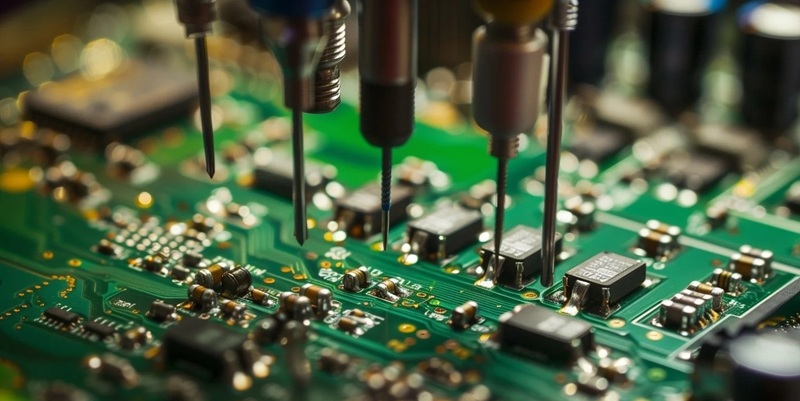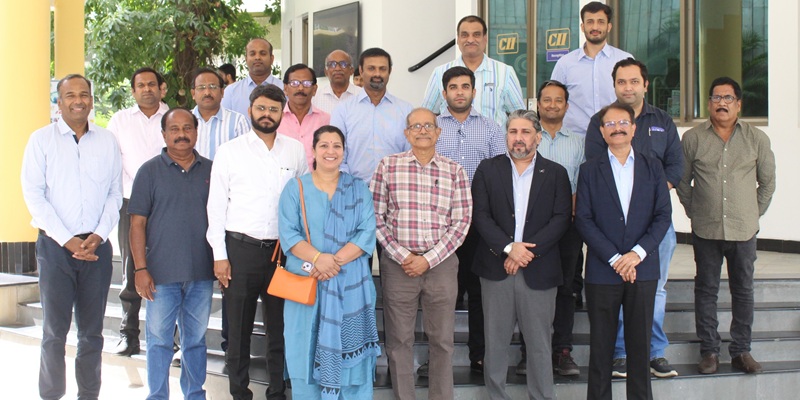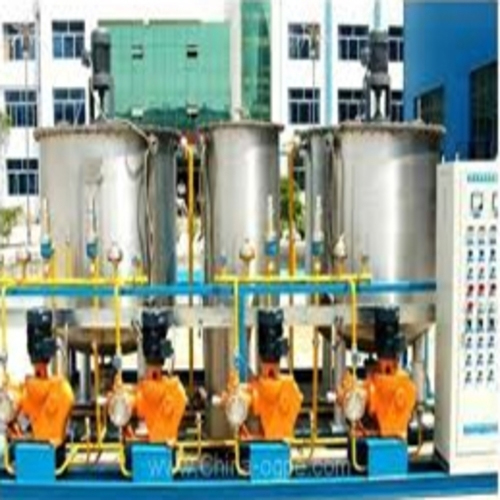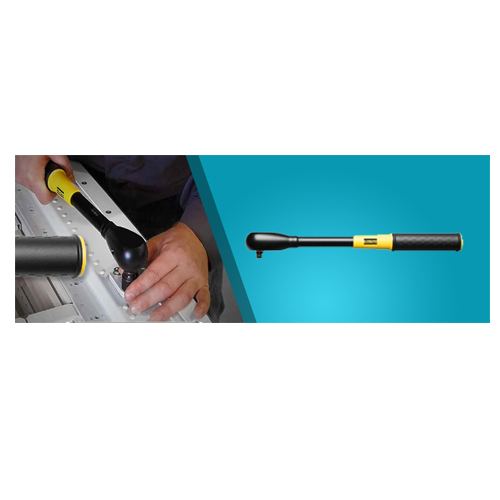Schedule a Call Back
Driven by innovation and technology
 Technical Articles
Technical Articles- Nov 01,16

The Indian packaging, printing and labelling industry has been recording good growth due to a number of factors including new lifestyle trends among consumers and technologies.
At the Asia Fruit Logistica 2016 show held in Hong Kong in the second week of September, one of the companies that attracted attention was India’s Uflex Limited, one of the largest multinational flexible packaging materials and solution companies. In association with the Netherlands-based Perfotec, the company showcased its Active Modified Atmospheric Packaging (MAP) technology to over 100 companies in the Asian region, explaining the open architecture technology for shelf-life extension. Speaking during the show, Bas Groeneweg, CEO, Perfotec said, “It was interesting for customers to experience first-hand the technology live and some customers brought their products for testing and to select the right transmission bags, which they carried back for validation.
According to Uflex’s Vice-President N Siva Shankaran, “Flexfresh™ is the only liner bag in the world which is biodegradable by composting, thereby providing a total sustainable solution in the supply chain for fresh produce. With almost negligible weight loss and touch dry products, this shelf-life extension is the best possible amongst the options available to date.” Adding to this, the company’s CMD Ashok Chaturvedi says, “This is indeed a path-breaking packaging solution deploying MAP technology that has seen the light of the day owing to collaborative efforts of Perfotec and Uflex.”
The packaging industry in India continues to witness such innovations on a regular basis. Recently, for example, food and drink company Nestle India launched new packaging for its Maggi, Nescafe and Kitkat brands that has a social connection. It will feature new taglines spreading awareness of issues around the education of girls in India. The new packaging will also feature a blue band with information about Nanhi Kali, one of the largest non-governmental organisations providing education to underprivileged girls across India. “We are changing the packaging of three of our most iconic brands to sensitize and draw attention to the crucial need for society and citizens to embrace our collective responsibility in ensuring that girls are allowed, given access to and nurtured with the power of education,” says Suresh Narayanan, the company’s CMD.
Impressive Growth
A new joint study by the Associated Chambers of Commerce and Industry in India (ASSOCHAM) has stated that the country’s packaged food market increased in value to more than USD 51.5 million last year. The study, entitled ‘Dynamics Involved in Multi-Layered Food Packaging’, was carried out in partnership with TechSci Research. It claims that increasing disposable incomes and a rising number of nuclear families is expected to have contributed to the growth of packaged food in the processed food market. This year, the market share of packaged food is estimated to increase from 28% to 29%. According to ASSOCHAM’s Secretary General D S Rawat, “The growing usage of packaging material in various food service outlets together with increasing demand for packaged beverage and expanding working class population has given impetus to food packaging industry in India.”
Additionally, the study notes that India’s existing plastic food packaging market is estimated to be worth more than USD 4 billion and holds nearly 63% of the country’s total plastic packaging market, which has a current market size of around USD 7 billion. The printed cartons and rigid packaging sector has a 28% market share, while flexible packaging material, including food packaging laminates and packaging foils, have a share of 24%. In fact, packaging is among the high growth industries in India and developing at 22-25% per annum and becoming a preferred hub for the packaging industry. Currently the 5th largest sector of India’s economy, the industry has reported steady growth over the past several years and shows high potential for much expansion, particularly in the export market.
The costs of processing and packaging food can be up to 40% lower than parts of Europe which, combined with India’s resources of skilled labour, make it an attractive venue for investment. As industry experts point out, the Indian packaging industry has made a mark with its exports that comprise flattened cans, printed sheets and components, crown cork, lug caps, plastic film laminates, craft paper, paper board and packaging machinery, while the imports include tinplate, coating, lining compounds, etc. In India, the fastest growing packaging segments are laminates and flexible packaging, especially PET and woven sacks. There are about 600-700 packaging machinery manufacturers, 95% of which are in the small and medium sector located all over India.
Another report, prepared by FICCI and Tata Strategic Management Group on plastic packaging, states that the packaging industry in India is expected to reach USD 73 billion in 2020 from USD 32 billion in 2015. “In the coming years, the Indian packaging industry is anticipated to register 18% annual growth rate, with flexible and rigid packaging expected to grow annually at 25% and 15% respectively. The Indian packaging industry constitutes about 4% of the global packaging industry. The per capita packaging consumption in India is quite low at 4.3 kilograms compared to countries like Germany and Taiwan where it is 42 kilograms and 19 kilograms respectively. However, organised retail and boom in e-commerce, which offer huge potential for future growth of retailing, is giving a boost to the packaging sector,” the report states.
New trends
Today, plastics are the material of choice in packaging for certain sectors such as FMCG, food and beverages, pharmaceuticals, etc. Globally, plastics comprise 42% of packaging with the combination of rigid and flexible plastics in packaging. Plastics are used heavily for packaging due to innovative visual appeal for customer attraction and convenience. Additionally, they improve the hygiene quotient and shelf-life of the products especially in food and beverages segment. “As plastics possess versatile properties it can help us do more with less. One such property is light weight. As plastics are light in weight, they have a high product to package ratio which results in lighter weighed end product. For example, only 1.5 pounds of flexible plastics can deliver approximately 60 pounds of beverage as compared to three pounds of aluminium or 50 pounds of glass,” the FICCI-TSMG report states.
India is a growing market for plastics and consumes about 12.8 million metric tonnes (MMT) of plastics annually against global consumption of 285 MMT per year. Plastics and polymer consumption is growing at an average rate of 10%. About 30,000 processing units with 1,13,000 processing machines have created manufacturing capacity of 30 MMT per annum in India. This has been achieved with a 13% CAGR of processing capacity during the last 5 years. The industry has invested USD 5 billion in the machinery and is expected to invest USD 10 billion more for increasing the capacity during the next five years. Further, the entry of MNCs and the retailing shifts have also contributed to a higher use of barcode and auto ID technologies. The AIDC industry that includes barcodes, smart cards, RFID, biometrics and EAS is probably the fastest growing segments of the economy anywhere in the world. Though the base is still small in India, the over 40% growth that is taking place year on year is increasingly becoming significant.
Printing industry
Over the years, the printing industry (relevant to packaging) has been rapidly growing across the world and so also in India. In fact, along with packaging, the Indian printing industry is one of the biggest and fastest growing sectors and it is estimated that more than 2,50,000 printing presses of small, medium and large sizes exist in India, with a capital investment of over USD 2 billion. As per an industry report, the Indian printing industry may reach Rs 374 billion by the end of 2018. Globally, it has been rated within the top 10 countries along with USA, China, Brazil, Mexico, etc.
Associated with the printing industry is the barcode segment which is estimated to be around Rs 2.5 billion and growing at over 30- 35% every year. The hardware – printers and scanners – contribute equally to 50% of this turnover while the consumables such as tags, labels and ribbons contribute 35% while the services account for the rest. The industry has around 50 players with five large players having a turnover of over Rs 100 million. Major international suppliers such as Symbol , PSC, Metrologic and Unitech for barcode scanners and Zebra, Intermec, Printronix, Sato, Toshiba and Datamax for barcode printers have their presence in India. Ean India, an affiliate of Ean International, has played a large role in creating awareness about barcodes while developing and implementing standards across the industry. AIDC Technology Association has helped organise the industry by forming an association of all stakeholders of this technology.
Meanwhile, digital printing continues to face some headwinds due to the high cost of operation and consumables. “However, as a slight change in their thought process, the higher end printers say it is time to consider digital printing as a complementary part in a combination press. So while they invest in a press that has offset, flexo, gravure and screen printing capabilities, they will probably also opt for a digital printing station, and that will add to their capabilities. This will also help them in proofing, as well as catering to an increasing number of short run customers,” opines Harveer Sahni, Managing Director, Weldon Celloplast Limited on his blog about this industry.
Labelling industry
The Neilsen Company, in a report titled ‘Emerging Consumer Demand: Rise of the Small Town Indian,’ states, “Despite a current inflationary environment, Tier II and Tier III towns are showing strong momentum with an improved demand appetite. The smaller Indian towns are leading the demand surge and shopping like metros.” The label printing industry has also been witness to this trend. In the past few years, investments have been made to produce labels in smaller towns of India. According to interviews conducted by Sahni, the labeling industry in India can safely be estimated to be growing in excess of 15% per annum. Most of the organised Indian label industry belongs to the MSME sector and are predominantly family-owned businesses.
“Until a few years ago, most of the good presses that contributed to the evolution of labels in India came from Europe, US and Japan. Gradually Taiwan started making presses, which was followed by Chinese-made equipment coming to India in big numbers due to the low prices of the equipment. Indian press manufacturers have also made a mark for themselves in recent times. Today, label printers with Chinese and Indian presses have become a definite and identifiable segment of our label industry,” Sahni says.
The key factor triggering the growth curve in this industry is, as is the case with packaging and printing, innovation coupled with use of the latest technologies. For instance, Pragatai Pack has invested in some of the most advanced equipment to enhance its printing, converting and decorating capabilities. According to Mahendra Shah of Manohar Packaging, “Having gone beyond the lower limit, it would be best to divert to innovations and get into more technical products.” Agrees Himanshu Kapur of J K Fine Prints Mumbai, who says, “Higher volumes and lower margins is a wrong growth trend; so we prefer technically innovative products.” With the advent of combination presses going wider and able to handle a wide array of substrates and thicknesses, producing folding cartons inline has also become a reality. Many label printers feel this is the time to move in that direction.
Huned Contractor
Related Stories

Aimtron Secures Rs 1 bn ODM Deal with Leading US Infrastructure Firm
Aimtron, an Electronics System Design and Manufacturing (ESDM) company, has signed a Rs 975.5 million ODM deal with a US infrastructure leader to develop advanced, transformer-free UPS systems for g..
Read more
Cooper Corporation & Sinfonia Technology Launch India’s First CPCB IV+ LPG Genset
Cooper Corporation and Sinfonia Technology (Japan) announce the launch of India’s first CPCB IV+ certified 10 kVA LPG genset, marking a strategic partnership focused on advancing clean energy solu..
Read more
AIFI Launches ‘GenNext Entrepreneurs Forum’ to Shape India’s Forging Industry
AIFI unveils the GenNext Entrepreneurs Forum to foster emerging leaders in India’s forging industry, focusing on innovation, sustainability, and global competitiveness.
Read moreRelated Products

Ozone System
Omnicorp Environs & Infratech Co offers a wide range of ozone systems.

SWR ’Slipping’ Wrenches
Reliable
Trade Links offers a wide range of SWR ’slipping’ wrenches.

Gripping Systems – Rgg
Schunk Intec India Pvt Ltd offers a wide range of Gripping Systems – RGG - cleaning
device with shank interface.












